The sizes of the planets in the solar system differ both within and among different groups. The gas giants, for instance, are significantly larger and more condensed compared to the planets in the Earth-group. In terms of proximity to the Sun, the order is as follows: Hermes, Aphrodite, Earth, Mars, Jupiter, Saturn, Sky, and Neptune.
Planet Earth
Planet Earth is the third celestial body orbiting the Sun and the sole known habitat for life as we know it. It stands apart from the other members of our solar system due to its possession of liquid water on its surface.
Internally, our planet consists of three distinct geological layers.
Unlike a perfect sphere, Earth exhibits a slightly flattened shape at its poles.
While it is the largest among the four inner planets in terms of proximity to the Sun, Earth ranks as the fifth largest planet in our solar system.
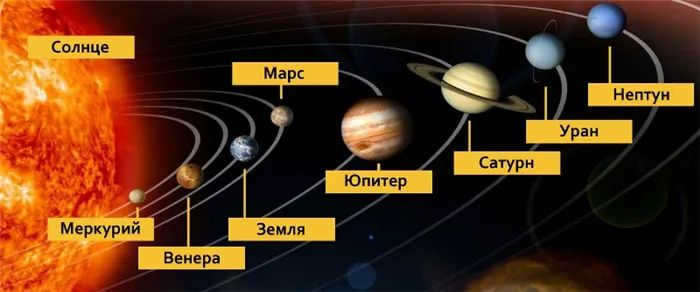
Characterization
| 1.083 x 10¹² km³ |
| 6,371 km |
| 12,742 km |
| 510,100,000 km² |
| 5.972E24 kg |
| 40,075 km |
| 5.515 g/cm³ |
| Along the equator, 40075.017km; between the poles, 40007.86km. |
| About 465 m/s or 1674 km/h |
| Average 14°C; minimum -9Z.2°C (in Antarctica in 2010); maximum 70.7°C (in the desert of Iran in 2005). |
| 4.54 billion years (+/- 50 million) |
The Earth’s atmosphere spans from the Earth’s surface up to an altitude of approximately 10,000 kilometers, gradually blending into the vastness of space (although there is some disagreement among scientists regarding the exact boundary of the atmosphere).
The composition of the Earth’s atmosphere consists of:
- Nitrogen: 78%
- Oxygen: 21%
- Argon: 0.9%
- Trace amounts of other gases (such as carbon dioxide, methane, water vapor, and neon): 0.1%
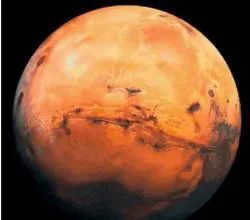
The Earth’s atmosphere is composed of five different layers, each with its own unique temperature characteristics.
- The first layer, known as the troposphere, is the closest to the Earth’s surface and extends from 16 to 18 km from the surface. It is wider at the equator and thinner at the poles. The troposphere makes up 75-80% of the total mass of the atmosphere. As you go higher in the troposphere, the temperature decreases. This layer is where most clouds are found.
- The stratosphere is the layer of the Earth’s atmosphere that starts after the tropopause, the upper boundary of the troposphere, and extends up to a height of approximately 50-55 km. Unlike the troposphere, the temperature in this layer actually increases as you go higher. The stratosphere is home to 90% of the ozone in our atmosphere, which is vital for protecting life on Earth by absorbing harmful ultraviolet radiation from the sun. This important layer of the atmosphere is known as the stratosphere, and its upper boundary is called the stratopause.
- The Mesosphere is a layer of the Earth’s atmosphere that extends 85 km above the surface. It ranges from 50 km to 80-85 km in altitude. As you go higher in this layer, the temperature decreases. The coldest temperatures in the atmosphere can be found at the top of the mesosphere, reaching as low as -90°C. Despite its thinness, the mesosphere is dense enough to cause meteors to burn up as they pass through it, resulting in the phenomenon of “shooting stars”. The upper boundary of the mesosphere is known as the mesopause.
- The Thermosphere is another layer of the Earth’s atmosphere that extends up to 600 km in altitude (ranging from 80 to 800 km). In this layer, the temperature increases as you go higher, primarily due to solar radiation. The upper regions of the thermosphere can reach temperatures as high as 2000°C.
- The exosphere is the highest layer of the Earth’s atmosphere, extending from 600-800 to 2000-3000 km above the surface. It is the point where the atmosphere merges with outer space. Within this layer, gas molecules, primarily hydrogen and helium, are able to escape into space due to the Earth’s weak gravity. Additionally, the exosphere is characterized by extremely high temperatures, reaching above 2000°C.
The Composition of the Earth
The Earth is composed of three primary layers.
- The core, which is located in the center of the planet.
- The mantle, which surrounds the core.
- The crust, which is the outer layer covering the mantle.
At the very center of the Earth lies a spherical core with a radius of approximately 3,500 km. Scientists estimate that it is located 2,900 kilometers below the surface.
Although its exact composition has not yet been determined, it is believed to be primarily made up of iron and other elements. Scientists hypothesize that the core consists of two distinct parts:
- The Earth’s inner core, which is a solid layer at the very center with a radius of 1,300 kilometers.
- The Earth’s outer core, which is a liquid layer surrounding the solid inner core with a radius of 2,200 km.
The core, which is the warmest part of our planet, can reach temperatures of up to 6000°C.
Mantle
The mantle, also known as a “woolly mantle” in Greek, acts as a cloak or blanket over the core. It is approximately 2,900 kilometers thick and has an average temperature of around 2,000°C.
Composed mainly of iron and magnesium-rich minerals, the mantle is predominantly made up of silicates. These silicates include olivine, granite, and pyrene. Another significant rock type present in the mantle is magnesium oxide. In addition to these minerals, the mantle also contains elements such as iron, aluminum, calcium, sodium, and potassium.
Earth’s Crust
The outermost layer of the Earth, known as the crust, is composed of solid rock and minerals. It covers the mantle and extends across the entire surface of the planet. The thickness of the continental crust is approximately 75 kilometers, while the oceanic crust is much thinner at around 15 kilometers.
The depth of the crust can vary, as can its temperature. At the surface, the crust experiences ambient or oceanic temperatures, which can be extremely high in arid deserts and lower in deep valleys.
Both the crust and the upper mantle are part of a larger geologic unit known as the lithosphere.
It is worth mentioning that the astronomer William Herschel initially mistook the planet he was observing through his telescope for a comet. He was so convinced of this misconception that he failed to realize he was actually observing a new planet.
Solar celestial body
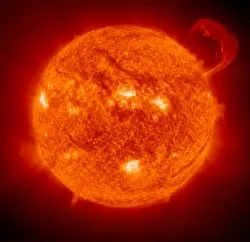
The Sun is the celestial body from which all life in our solar system originated. It is encompassed by various celestial objects such as planets, dwarf planets, satellites, asteroids, comets, meteors, and luminous dust particles.
The Sun came into existence approximately 5 billion years ago. It is a spherical, radiant ball of plasma with a mass that surpasses that of the Earth by more than 300,000 times. Its surface temperature exceeds 5,000 degrees Celsius, while its core temperature reaches well over 13 million K.
The Sun, known as our galaxy, is a massive and radiant star. Our galaxy is located approximately 26,000 light-years from its center, and it would require 230 to 250 million years to complete a full orbit around it! In contrast, the Earth takes only one year to make a complete revolution around the Sun.
The celestial body known as Mercury
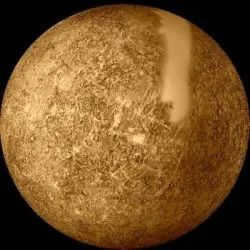
Hermes, the tiniest planet in the solar system, orbits the Sun at the closest distance. Unlike other planets, Hermes does not have any natural satellites orbiting around it.
Its surface is marked by numerous craters which were formed billions of years ago due to intense meteorite impacts. These craters vary in size, ranging from just a few meters to over 1,000 kilometers in diameter.
Mercury possesses an extremely thin atmosphere, primarily composed of elements from the Sun’s atmosphere that are carried away by the solar wind. Due to its proximity to the Sun and the absence of an atmosphere to retain heat, surface temperatures on Mercury can fluctuate between -180 and +440 degrees Celsius.
In terms of Earth’s standards, Mercury completes one full revolution around the Sun in a span of 88 days. Additionally, a single day on Mercury lasts for 176 Earth days.
Venus: The Mysterious Planet
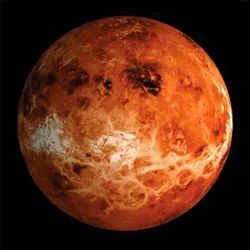
Venus, the second closest planet to our sun, is often referred to as “Earth’s sibling” due to its slightly smaller size compared to Earth. Unlike Earth, Venus has no natural satellites orbiting around it.
The planet’s atmosphere is composed mainly of carbon dioxide, along with traces of nitrogen and oxygen. With an atmospheric pressure over 90 bar, which is about 35 times higher than that of Earth, Venus has an extremely dense atmosphere.
Due to its high levels of carbon dioxide and the resulting greenhouse effect, as well as its dense atmosphere and proximity to the Sun, Venus is often referred to as “the hottest planet”. Surface temperatures on Venus can reach up to a scorching 460°C.
After the Sun and the Moon, Venus is one of the brightest objects visible in Earth’s sky.
The Moon plays a crucial role in stabilizing Earth’s climate by moderating its wobble on the axis. This moderation makes our planet more habitable and ensures a relatively stable climate.
When it comes to size and mass, Earth is the fifth largest planet in the solar system. With a radius of 6371 km and a mass of 5.97 x 10 24 kg, it is the largest Earth-like planet, although it is smaller than the gas and ice giants. What sets Earth apart is its density, which is the highest in the solar system at 5.514 g/cm3.
Physical Features of Earth
The Earth has a slightly eccentric orbit (0.0167). The distance from the Sun to its closest point (perihelion) is 0.983 astronomical units, and to its farthest point (aphelion) is 1.015 astronomical units.
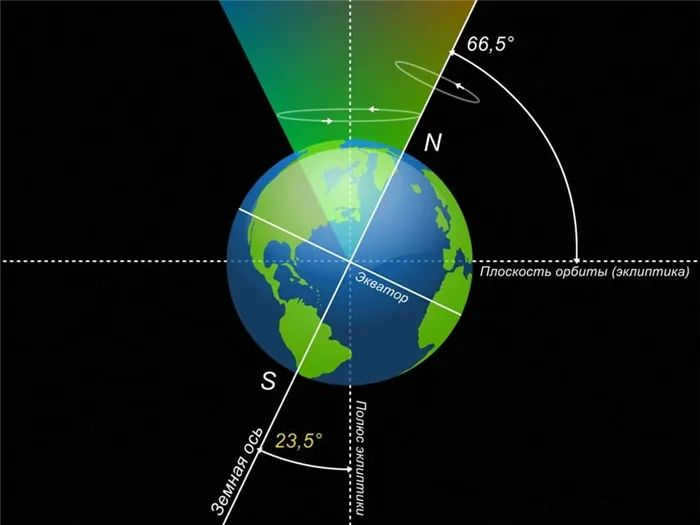
The inclination of the Earth’s equator and its position in relation to its axis of rotation and orbital plane.
Circumnavigations around the Sun take 365.24 days. This is known because of the presence of distinct years, where an extra day is added every four orbits. It was previously believed that a day consisted of 24 hours, but it is actually 23 hours, 56 minutes, and 4 seconds long.
A knowledgeable tarot reader addresses the following inquiries:
What will be the nature of your future? How will your relationships unfold? What is the optimal decision to make?
You will observe that the shaft is moving away from the pole, indicating a counterclockwise rotation. The shaft is inclined at an angle of 23.439281° from perpendicular to the plane of the path. This has an impact on the amount of light and heat.
Earth’s orbit and rotation
| 147,098,290 km 0.98329134 a. e. |
| 152,098,232 km 1.01671388 a. e. |
| 149,598,261 km 1.00000261 a. e. |
If the North Pole is facing the sun, the sun sets in the northern hemisphere during summer and in the southern hemisphere during winter. Above the Arctic Circle, there is a point where the sun does not rise at all, and for the following six months, darkness and winter prevail there.
Composition and Surface
The Earth has a spherical shape, with the poles flattened and the equator curved (diameter -43 km). This unique shape is a result of the Earth’s rotation.
The Earth’s structure consists of different layers, each with its own distinct chemical composition. Unlike other planets, our core is divided into a solid inner part (radius – 1220 km) and a liquid outer part (3400 km).
Following the core, we have the mantle and the crust. The mantle extends to a depth of 2890 km and is the densest layer. It is composed of silicate rocks that contain iron and magnesium. The Earth’s crust is further divided into the lithospheric (comprising tectonic plates) and the asthenospheric (having low viscosity) layers. You can see the Earth’s structure depicted in the figure below.
An illustration showing the different layers of the Earth, including the inner and outer core, mantle, and crust.
The lithosphere is divided into solid structural plates that are rigid blocks moving relative to each other, resulting in intersections, discontinuities, and various geological phenomena such as earthquakes, volcanic activity, and the formation of mountains and sea trenches.
There exist seven major plates: the Pacific Plate, the North American Plate, the Eurasian Plate, the African Plate, the Antarctic Plate, the Indo-Australian Plate, and the South American Plate.
Our planet is unique as approximately 70.8% of its surface is covered by water. The map located at the bottom of the Earth provides a visualization of the tectonic plates.
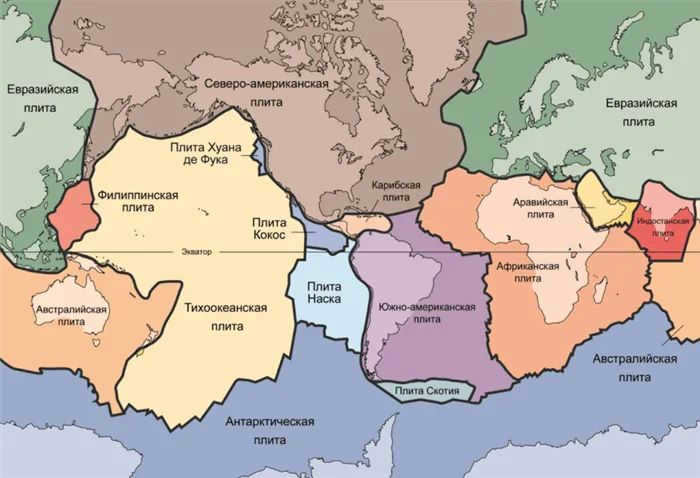

Earth’s tectonic plates
Earth’s topography varies across different regions. The underwater terrain is characterized by mountain ranges, underwater volcanoes, sea trenches, canyons, plains, and even sea plateaus.
Throughout the planet’s history, its surface has undergone continual changes. The movement and erosion of tectonic plates have played a significant role in shaping the Earth’s landscape. Other factors such as glacial transformation, coral reef formation, meteorite impacts, and more have also contributed to these changes. These processes have had both immediate and long-term effects on the Earth’s surface.
There are three main categories of continental crust: igneous, sedimentary, and metamorphic. The igneous category consists of granite, andesite, and basalt. Sedimentary rocks make up 75% of the crust and are formed by the accumulation and burial of sediments. Metamorphic rocks, on the other hand, are formed through the transformation of pre-existing sedimentary rocks.
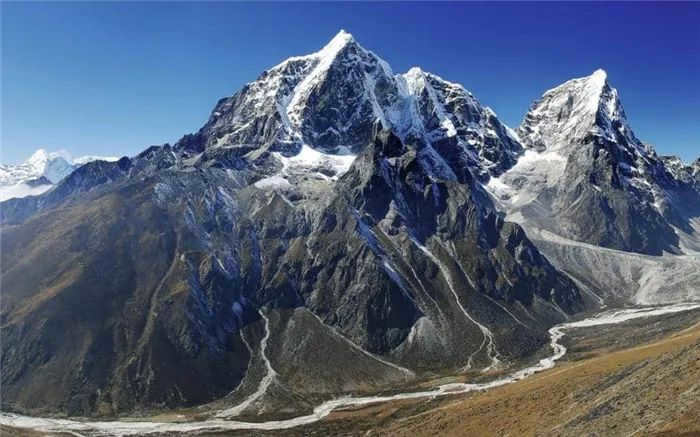
From the highest peak to the lowest point, the Earth’s surface spans a range of -418 meters (Dead Sea) to 8,848 meters (Mount Everest). On average, the land stands at an elevation of 840 meters above sea level. This mass is also unevenly distributed across hemispheres and continents.
A skilled tarot reader can provide insights into your future:
What lies ahead? How will your relationships unfold? What decisions should you make?
The outermost layer of the Earth is the soil, acting as a boundary between the lithosphere, atmosphere, hydrosphere, and biosphere. Approximately 40% of the land is utilized for agricultural purposes.
Characteristics of the Earth’s Atmosphere and Temperature
The Earth’s atmosphere consists of five distinct layers: the troposphere, stratosphere, mesosphere, thermosphere, and exosphere. As one ascends through these layers, the amount of air, pressure, and density gradually decrease.
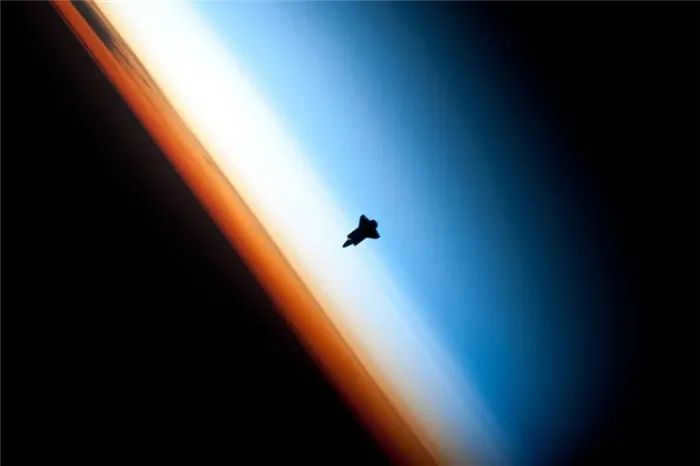

A photograph of the atmosphere was taken by the Endeavor spacecraft. The orange layer represents the troposphere.
The troposphere is the layer closest to the surface, measuring 0-12 km in height. It contains 80% of the atmosphere’s mass, with 50% concentrated within the first 5.6 km. The troposphere is composed of a mixture of nitrogen (78%), oxygen (21%), water vapor, carbon dioxide, and other gaseous molecules.
Visible between 12 and 50 km is the stratosphere, which is separated from the troposphere by the tropopause, a region of relatively warm air. The ozone layer is located within the stratosphere. When the ozone layer absorbs ultraviolet radiation, its temperature increases. The diagram illustrates Earth’s atmospheric layers.
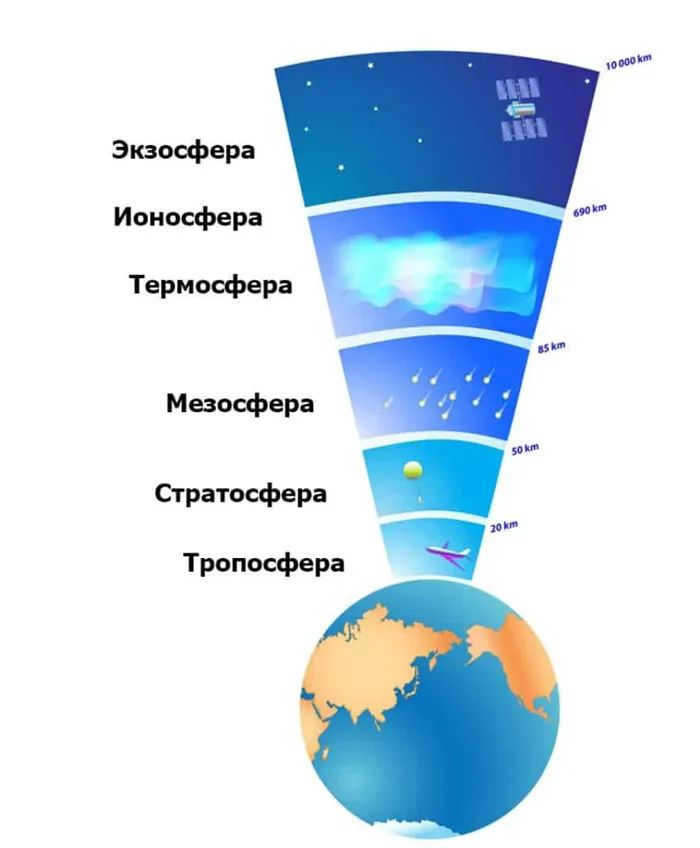
The atmospheric layer displays the typical heights at which the Aurora Borealis occurs.
This layer is stable, with minimal turbulence, cloud coverage, or other weather formations.
The mesosphere is located at an altitude of 50-80 kilometers. It is the coldest section, reaching temperatures as low as -85°C. It is situated near the middle rift, which spans from 80 km to the thermosphere (500-1000 km). Between 80-550 km lies the ionosphere, where temperature increases with altitude. The Northern Lights can be observed in photographs taken from Earth.
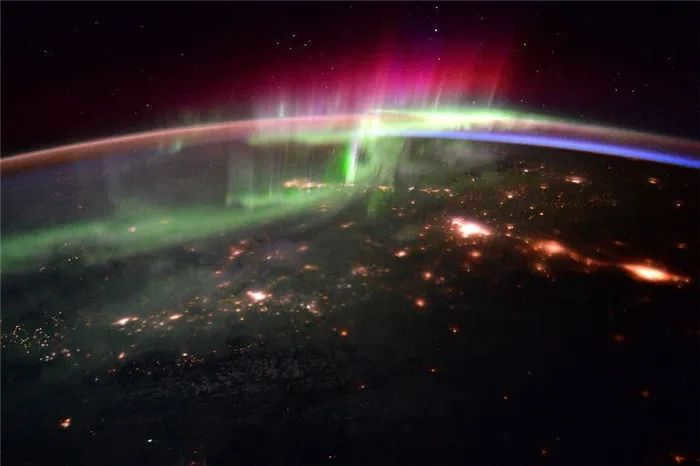
The ISS captured stunning images of the Aurora Borealis on July 25, 2010.
Within this layer, known as the exosphere, there are no clouds or water vapor. However, at the altitude of the International Space Station (320-380 km), a unique phenomenon known as a saddle is formed.
The exosphere is the outermost layer before reaching the vacuum of space. It consists mainly of hydrogen, helium, and other low-density molecules. However, the particles within this layer are so widely dispersed that it does not behave like a typical gas, and particles are constantly escaping into space. This is where most satellites are positioned.
There are numerous factors that impact this signal. The rotation of the Earth on its axis over a 24-hour period causes one side to always experience night and low temperatures. Additionally, the Earth’s axis is tilted, causing the northern and southern hemispheres to tilt and approach each other alternately.
All of these factors contribute to the creation of seasons. Nowhere on Earth do temperatures experience drastic drops or rises. For instance, the amount of light that reaches the equator varies minimally.
If we consider an average value, the temperature is approximately 14°C. However, in July 1983, the Soviet Vostok station on the Antarctic Plateau recorded a maximum temperature of 70.7°C (Southern Desert) and a minimum temperature of 89.2°C.
The solar system consists of a collection of planets orbiting around a central star. Scientists estimate that it formed approximately 4.57 billion years ago through the gravitational compression of gas and dust clouds.
The biggest planet in our solar system
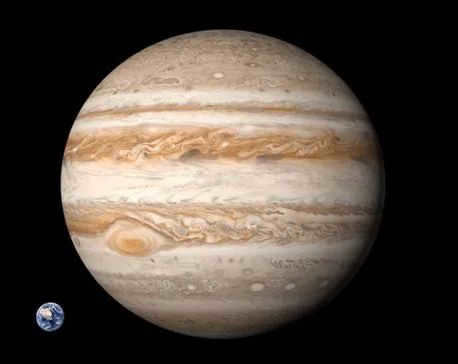
Jupiter, the largest planet in our solar system, occupies the fifth position from the Sun and revolves outside the primary asteroid belt. A juxtaposition of the dimensions of Jupiter and Earth reveals that Jupiter boasts a diameter 11 times greater and a mass 318 times more substantial than our home planet. Due to its immense size, Jupiter’s atmosphere exhibits distinct rotational speeds, leading to visible variations across its surface captured in this image. Notably, Jupiter’s iconic Great Red Spot is prominently displayed in the lower left corner. This colossal atmospheric storm has been a subject of observation for centuries.
What is the tiniest planet in the solar system? This isn’t such a straightforward inquiry. Nowadays, it’s widely acknowledged that Mercury is the tiniest planet in the solar system. This fact was established some time ago. However, you’re already aware that up until August 24, 2006, Pluto was considered the tiniest planet in our solar system.
More observant readers may recall that Pluto is a dwarf planet. And there are up to five of them that are recognized. The smallest dwarf planet is Demeter, which has a diameter of approximately 900 kilometers. But that’s not all.
There are celestial bodies known as minor planets, measuring only 50 meters in diameter. Among these, Icarus, with a diameter of 1 km, and Pallas, with a diameter of 490 km, fall under this classification. Naturally, there is a multitude of these small celestial bodies, making it challenging to determine the smallest one, as their sizes are difficult to observe and calculate. Consequently, the answer to the question “What is the name of the smallest planet in the solar system?” depends on the specific meaning attributed to the term “planet”.
Venus, the second nearest planet to our sun, is occasionally referred to as Earth’s sister due to its slightly smaller size compared to Earth. Venus does not possess any satellites.
What is the total number of dwarf planets in our solar system?
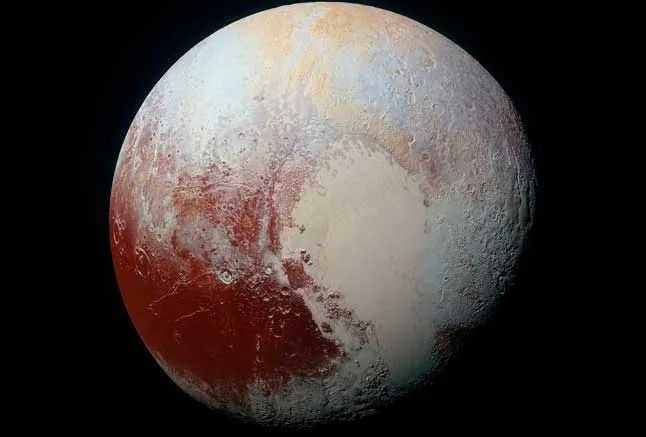
A lot of individuals are aware of the fact that Pluto was once classified as a planet, but it has now been reclassified as a quasi-planet. What exactly are quasiplanets? And what is the total number of quasiplanets?
In 1930, Pluto was initially found, but as research progressed, its mass estimates decreased. Presently, it is believed to be 500 times lighter than Earth. In the early 21st century, numerous other celestial bodies were discovered within Pluto’s orbit. Some of them were comparable in size to Pluto itself. However, since no other planets had such large objects in their orbits, a new concept of quasi-planets was introduced in 2006. The distinction lies in the fact that gravity prevents the orbit from straying too far from other massive objects. Pluto, along with Demeter, Jaumea, Makemake, and Elida, have attained quasi-planet status.
However, dozens of celestial bodies beyond the orbit of Poseidon could potentially meet the criteria for quasi-planet classification, although they have not yet received official recognition. One particularly intriguing example is Sedna, which stands out due to the fact that its farthest point in orbit (known as perihelion) is over 1000 astronomical units from the Sun. Continuously, new celestial objects with extraordinary characteristics are being discovered. According to Michael Brown, a prominent astronomer, the Kuiper belt alone may contain up to 260 potential quasi-planets, while there could be as many as 10,000 quasi-planets located in even more remote regions of our solar system.
Back in ancient times, there was a widespread belief that the Earth had a vast, flat circular shape. Over time, however, ideas regarding the planet’s shape began to shift. Ancient Greek scientists were also deeply engaged in the study of natural science and eventually reached the conclusion that the Earth is actually spherical in shape. This concept was endorsed by notable figures such as Aristotle, Pythagoras, and Eratosthenes. Nevertheless, this assumption was soon called into question. It wasn’t until 1687, when Newton unveiled his groundbreaking law of universal gravitation, that calculations were made revealing that the Earth’s shape is not a perfect sphere. The distribution of matter across the planet is not uniform, leading to deviations in its shape and size. These deviations are a result of the gravitational field exerted on the Earth by the Galaxy.
There is now a wealth of detailed knowledge about many facts that were once inaccessible. With the exploration of outer space, humanity has gained a comprehensive understanding of the Earth’s appearance as a whole.
In the past, the shape and size of the Earth were highly controversial topics. During ancient times and the Middle Ages, scientists were often expelled or even executed for suggesting that the Earth was spherical. Nowadays, this fact is not surprising even to young children.
Contemporary investigation
In the midst of the 20th century, thorough examination was conducted on the form of the planet, facilitated by satellites transmitting images capturing the planet’s magnificence from outer space. In addition to its visually striking blue hue, it became apparent that the planet did not possess a perfectly spherical shape. Subsequently, modifications were made to the understanding of the Earth’s shape and size.
The planet is marginally compressed at its poles. Precise determination of its shape and size falls within the realm of astrophysicists, mathematicians, surveyors, and astronauts. These measurements are crucial for accurate calculations, although for ordinary individuals, it suffices to know that our planet assumes a spherical form.
Physical figures
There are two physical figures that physicists use to describe the shape of the planet: the geoid and the ellipsoid. The geoid is the shape of the Earth in a conventional sense, while the ellipsoid is an idealized shape used in mathematical formulas to describe the planet. The rotation of the planet can be accurately described using the ellipsoid, which is a major challenge when using the geoid.
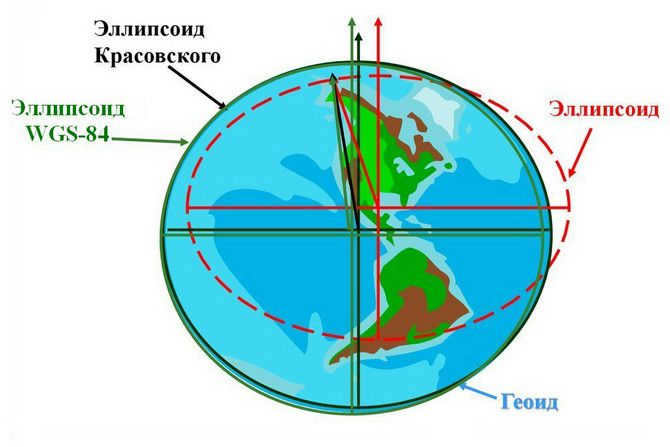
In order to comprehend the reason why the Earth is not perfectly spherical, one must possess knowledge of the laws of physics. One such law states that when the planet rotates on its axis, a centrifugal force is generated near the equator. The poles do not experience this force, thus resulting in the observed discrepancy.
[warning]In ancient India, there was a belief that the Earth was a vast plane, supported by four elephants, with a turtle swimming beneath them in the sea. Even in those times, the concept of the four corners of the world was already present, symbolized by the elephants.[/warning]
The Planet’s Surface Area
In addition to its shape, scientists have successfully determined the dimensions and computed the overall surface area of Earth. Official records show that it measures 510.072 million square kilometers. While this may seem like a substantial number, a significant portion (almost 70%) is covered by water, including oceans, seas, and rivers. Only a little over 30% remains as land, which amounts to 148.940 million square kilometers. When we divide this land surface area by the estimated global population, each person would have approximately 0.02 km of land. This is already quite minuscule. It’s important to note that these land portions also include mountain ranges and deserts.
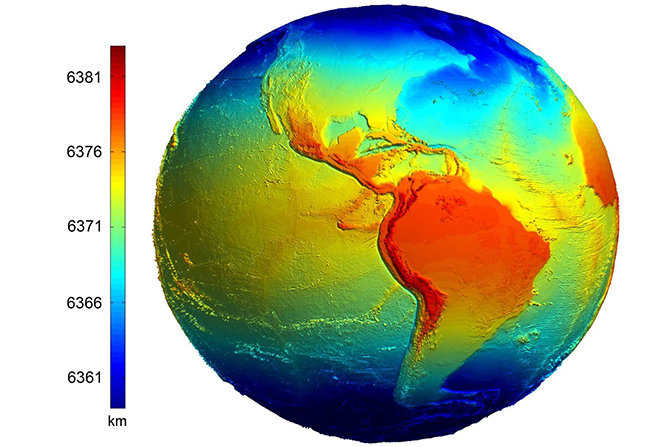
[notice]In ancient times, humans possessed a limited understanding of the shape and dimensions of the Earth, yet their creativity knew no bounds. For instance, the residents of Babylon firmly believed that their abode was situated upon a fragment of a colossal mountain, encompassed by a solid celestial canopy referred to as the sky.[/notice]
Discoverer of Well-Known Facts
The mathematician from ancient Greece, Eratosthenes, hailing from the city of Siena, was the first to ascertain the dimensions and form of the Earth. This scholarly individual meticulously observed the Sun for an extended period, and astutely noted that if the Sun were at its zenith in one part of the planet (Siena), it would deviate by a specific angle in another part (Alexandria). Armed with astronomical instruments available in the 3rd century AD, Eratosthenes was able to accurately measure this angle on the day of the summer solstice. The scientist meticulously conducted these measurements over the course of several years.

Eratosthenes conducted the necessary computations, assuming that both cities are situated on the same meridian, and obtained a measurement of the Earth’s circumference, which, when converted to modern kilometers, amounts to 6278. This value is quite close to the actual size, and it allows us to determine the distance to the Earth’s center. It should be noted that Eratosthenes was unable to accurately measure the distance between the cities during his time, so he relied on the speed of a camel caravan. Consequently, his calculations were slightly less precise. In reality, the radius of the Earth’s circumference is 6371 kilometers, or, to answer the question about its diameter, it is 12,743 kilometers.
The Scientist’s Followers
In addition to Eratosthenes, there have been numerous other scientists throughout history who have attempted to make their own discoveries and determine the shape and size of the planet. One such individual was the Dutchman Sibelius, who lived during the 17th century. Sibelius had access to a more modern device for his time called a theodolite, which he used in his calculations. Prior to Sibelius, scientists in the 9th century also attempted to determine the size of the Earth using degrees. However, these measurements were incredibly difficult and often impossible to obtain due to obstacles such as mountains, rivers, lakes, and villages. The rugged terrain made it nearly impossible to accurately measure distances and calculate the planet’s size. It wasn’t until the 17th century with the invention of the triangulation method that this problem was finally solved.
The technique relies on the creation of triangles and the measurement of their respective bases.
[stop]During the 19th century, scientists from Russia played a significant role in determining the form and dimensions of the Earth. The investigation was conducted at the Pulkovo laboratory under the expert supervision of V.Y. Struve.[/stop].
The Size of the Planet
In the 17th century, scientists engaged in a lively debate about the variation in Earth’s gravitational pull at different points on the planet. It eventually became evident that gravity is weaker closer to the North Pole. This phenomenon was attributed to the compression of the poles, which results in a shorter distance from the surface to the center of the Earth at the poles. To confirm this hypothesis, two expeditions were organized in 1735-36. One expedition aimed to calculate the polar radius, while the other focused on the equatorial radius. These expeditions provided evidence that the radius at the poles is longer than the equatorial radius. Subsequent research in this field has determined that the difference between the two radii is precisely 21.4 kilometers.
The exact measurements of the Earth’s circumference and radii are as follows:
- The circumference of the Earth along the equator is 40,075.7 kilometers;
- The circumference of the Earth along the meridian is 40,008.55 km;
- The radius of the Earth’s major semi-major axis is 6,378.2 km;
- The radius of the Earth’s minor peninsula is 6,356.8 km;
- The average diameter of the Earth is 12,743.2 km;
- The distance to the center of the Earth is 6,371.3 km.
[warning]Around the 7th century BC, people started to realize that the shape and size of the planet made it impossible for it to stand on something. This realization came from observing the sun constantly disappearing and appearing. The sun was revered and even feared by many during that time.[/warning]
The Boundary of Precision
The definitive shape and size of the planet have yet to be determined. Each year, scientists employ new techniques and approaches to examine the circumference, area, and other characteristics. Utilizing cutting-edge technologies allows for the collection of diverse data. For instance, the Earth’s circumference calculated in 2000 differs by 5 mm from the measurements obtained in 2007. This discrepancy does not imply any incompetence on the part of scientists or a shrinking Earth. Rather, it signifies the progress of science and the introduction of more precise measuring instruments, which can lead to variations in width and other parameters over time.
Contemporary laboratories employ the following methods to ascertain the size of the Earth:
- Radio waves. Multiple radio telescopes worldwide measure their value.
- Using laser technology to measure the distance from a satellite in space to the planet’s surface.
- GPS applications and programs.
The Earth’s Core
Another interesting point is the distance to the Earth’s core. This measurement is also known as 6371.3 km. At the center of the Earth, there is a solid core, which is located at a distance of approximately 2900 km. It is impossible for any human being to reach the Earth’s core due to the immense distance. The temperature at the core reaches up to 5000 degrees.
[warning]Due to the extreme pressure within the Earth, even if someone were able to travel to the core, they would be instantly destroyed.[/warning]
Watch these videos for more information on the shape, size, and movements of the Earth:
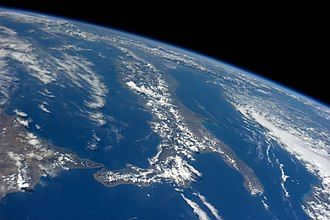
When we talk about the curvature of the Earth, we are referring to the way the Earth’s surface curves over a wide area due to the fact that the Earth is roughly spherical in shape. As a result, its curved surface deviates from the flat tangent plane, and this can be observed, for example, when looking at the surface of the sea even from relatively short distances (see Sea Level).
The spherical shape of the Earth was determined by Ionist scientists around 600 BC, which is common knowledge. However, it is also recognized that the Earth’s shape deviates from a perfect sphere and can be better approximated by an ellipsoid due to its rotation, which causes it to flatten. The equatorial circumference of the Earth is approximately 0.3% larger than the distance between the poles. This difference amounts to almost 43 km using the current reference ellipsoid (WGS 84). On the other hand, the variation between the highest point on Earth, Mount Everest, and the lowest point, the Mariana Trench, is measured relative to mean sea level.
Table of Contents
Calculation
If we assume the Earth to be spherical with an average radius of 6371 km (although it actually has a slight flattening of about 0.3 percent: the semi-major axes of the Earth’s central ellipsoid are about 6378 km and the extent is approximately 6357 km; the minimum radius of curvature is about 6334 km and the maximum is around 6400 km), the deviation of the ideal Earth’s surface from the tangent plane towards the center of the Earth is as follows:
0.8 mm per 100 m
20 mm per 500 m
78 mm per 1 km
1.96 m over 5 km
7.85 m over 10 km
This formula can be used as a simple approximation for small distances, where the distance is measured in meters, the radius of the Earth is 6,371,000 meters, and the deviation is also expressed in meters.
L. y sign is equal to L. 2 2 R. > >> >> L. R. y
An illustration of this can be seen in the following scenario: two individuals are situated on the Earth, which is assumed to be a spherical object, and they are approximately 10,000 meters apart. Despite both individuals having their eye levels positioned 1.96 meters above the surface of the Earth, they are still able to maintain visual contact with each other. This is due to the fact that the point of contact between their tangent planes and the Earth’s surface is located 5000 meters away in both cases. However, if one person were to have their eyes positioned at ground level, the other individual who is 10,000 meters away would need to be at least 7.85 meters above ground level in order for visual contact to be established. Л.
Using a more precise approximation formula with = ground radius, = distance, and = lowering, which represents the height disappearing below the tangential plane in “direct view” (also known as geodetic visibility), we can calculate the following values using the given (calculated with ): y sign equals L. 2 + R. 2 – R. + R ^ >> – R> R. L. y y L. R sign equals 6378 k m >>
000 0.31 m in 0 2 km 000 1.96 m in 0 5 km 000 7.85 m in 10 km 00 31 m in 0 20 km 0 196 m in 0 50 km 0 784 m in 100 km 1764 m in 150 km 3135 m in 200 km 4898 m in 250 km

Due to the Earth’s curvature, it is necessary to be at a certain height above the surface in order to have direct light contact between two objects that are 1000 km apart. This distance is roughly equivalent to the north-south extent of France or one fortieth of the Earth’s circumference. Using an approximation formula at a height of 500 km, this required height is approximately 19.6 km (shown as black dots).
Therefore, accurate height measurements are crucial when considering the curvature of the Earth, even at relatively short distances. These measurements increase in importance as the distance between the objects increases. When conducting measurements in person, the curvature of the Earth only has a noticeable effect at greater distances, which has led to the differentiation between “lowering” and “high geodesy”.
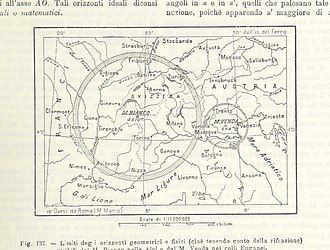
When determining the angle of elevation of mountains in the mountains, one can calculate the curvature of the earth. For example, at an altitude of 4810 m, Mont Blanc has the following angles of elevation based on the distance (taking into account the viewpoint at sea level, values in parentheses are without the curvature of the earth):
At 0 altitude and 50 km distance, the angle of elevation is +5.27° (+5.49° without the curvature of the earth). At 100 km distance, the angle of elevation is +2.30° (+2.75° without the curvature of the earth). At 150 km altitude, the angle of elevation is +1.16° (+1.83° without the curvature of the earth). At 200 km altitude, the angle of elevation is +0.48° (+1.38° without the curvature of the earth). At 250 km altitude, the angle of elevation is -0.02°.
Photographic evidence
One way to capture evidence of the Earth’s curvature is by using telephoto lenses to photograph distant ships on bodies of water or mountains with good visibility. In these images, distant objects not only appear smaller due to the angle of view, but they also appear to be positioned lower in the image because of the Earth’s curvature. This effect is amplified by the occlusion of the lower regions of the image by the horizon. The extent of this effect can vary due to the Earth’s refraction.
Earth. What a beautiful planet we all call home. How much knowledge do we possess about it? Quite a bit, indeed. And how much remains a mystery to us? A great deal, more than we can fathom. Our planet is hesitant to unveil its secrets. This is largely due to the fact that the secrets of Earth, so to speak, are not solely its own, but rather they are cosmic enigmas, the mysteries of the Universe.

Earth, as an astronomical object, is a celestial body that orbits the Sun alongside a group of other planets (Mercury, Venus, Mars, Jupiter, Saturn, Uranus, Neptune, Pluto).
The primary characteristics of planet Earth

– The Earth is located at an average distance of 149597870 km from the Sun.
– The Moon, on the other hand, is situated at an average distance of 384400 km from the Earth.
– It takes the Earth approximately 23 hours 56 min. 4.09 sec to complete a full revolution around its axis (sidereal day).
– The Earth’s revolution around the Sun, known as the tropical year, takes approximately 365.25 days to complete.
– The Earth has an average orbital velocity of 29.76 km/sec.
– In terms of mass, the Earth weighs approximately 6,000,000,000,000,000,000,000,000,000,000,000 billion tons.
Specifications of the Earth’s ellipsoidal shape:
– The major semi-axis, also known as the equatorial radius, is 6378.2 km.
– The minor semi-axis, also known as the polar radius, is 6356.9 km.
– The compression ratio, calculated as c=(a-b)/a, is 1 : 298.3.
– The average radius of the Earth, assuming it to be a perfect sphere, is 6371.2 km.
– The length of the meridian is 40008.6 km.
– The length of the equator is 40075.7 km, with a diameter of 12756 km.
– The total surface area of the Earth is 510,100,000 square kilometers.
– The average height of the land above sea level is 875 m.
– The average depth of the world’s oceans is 3800 meters.
– The highest point on land above sea level is Mount Everest, which reaches a height of 8848 meters.
– The deepest point in the world’s oceans is the Mariana Trench, which reaches a depth of 11022 meters.
To see more details, please refer to the table below:
*) The information provided in this paragraph is sourced from the Small Atlas of the World, Moscow, 1980.
Based on the data, it has long been recognized that the Earth is slightly flattened at the poles. However, there is evidence suggesting that the Earth has a melon-like shape, with compression at the equator causing the vertical axis to be several tens of kilometers longer than the equatorial axis. It is important to note that this hypothesis, proposed by scientists from the California Institute of Technology, is not being considered here and is only included for the interest of those fascinated by the exotic.
According to the current views of official science, what is the exact shape of the Earth? Based on the information provided in the Small Atlas of the World, it can be inferred that the Earth is spherical but with slight deviations from a mathematically perfect shape. Referring to the Earth as an ellipsoid seems inappropriate as the difference between its major and minor axes is too minuscule relative to its size. Hence, in scientific terms, the Earth is referred to as a geoid. This means that the Earth has a shape that is unique to itself.
Indeed, it is of no consequence to those individuals who day in and day out observe the objects and phenomena of the natural world around them without contemplating their true nature, causes, and even their very origin, what configuration the Earth takes. They fail to behold the breathtaking beauty and profound wisdom of the surrounding universe, and they lack the curiosity to inquire why everything on Earth is structured in such a manner, as well as the inclination to acquire knowledge about the very planet they inhabit. Their interests are confined to the realm of mundane existence. Such individuals are plentiful, and they coexist alongside us. Let me make it clear from the outset: our narrative is not intended for them. Our narrative is for those who harbor a fascination for every facet of the Earth: its genesis and antiquity, its aesthetic allure and opulence, its distinctive status as a celestial entity and as the birthplace of life and human civilization. Our narrative is for those who are not merely intrigued, but profoundly concerned about the future of the Earth, its ecology, its entire biosphere, and hence, the future of humanity.
When discussing the Earth and geospheres, it is important to address the question of how the Earth came to be. The origin of the Earth is a highly complex topic, as it involves the origin of the entire solar system and even the Milky Way galaxy. There are numerous scientific hypotheses and assumptions surrounding this subject. One notable hypothesis is the Big Bang theory. It is important to note that there is currently no unified theory on the origin of the Universe and the Solar System. Different scientific schools and individual scientists often propose conflicting hypotheses. For instance, one hypothesis suggests the following explanation for the origin of the solar system and the Earth:
The birth of the Sun and the planets in the solar system. The Sun and planets came into existence approximately five billion years ago from a massive cloud of cosmic gas and dust (1). This cloud took the shape of a flat, lens-like disk. It is believed by scientists that both this disk and the Sun originated from the same spinning mass of interstellar gas known as the protosolar nebula. The earliest phase of the solar system’s formation, which involved the separation of the protosolar nebula from a colossal molecular cloud in the Milky Way galaxy, remains the least explored.
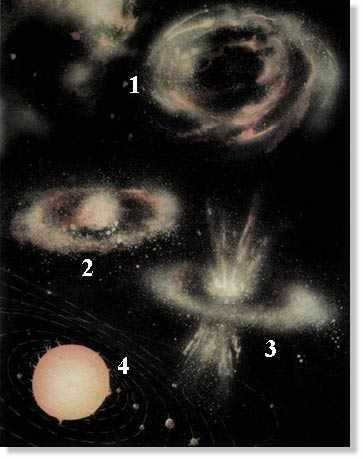
As a result of the gravitational forces of attraction, the cloud started to contract, giving rise to a spinning disk of material, with the majority of it accumulating in the center (2). The central core continued to contract, attracting more and more material, until at a certain point, deep within its core, the immense pressure caused a nuclear reaction to occur (3) – a star was ignited, giving birth to the Sun. The remaining material coalesced into smaller formations of rocks and gas clumps, thus forming the planets. This led to the formation of the current shape of the solar system (4).
The matter of the solar nebula was gathered in the inner part of the nebula due to the gravitational forces. It was in a molten state because of the high temperature, with denser substances like iron, nickel, and their compounds moving towards the planet’s center, while lighter substances like silicates of different metals, which later formed rocks, remained on the surface. This phenomenon is known as gravitational differentiation. Eventually, the temperature on Earth decreased, leading to the start of the solidification process.





